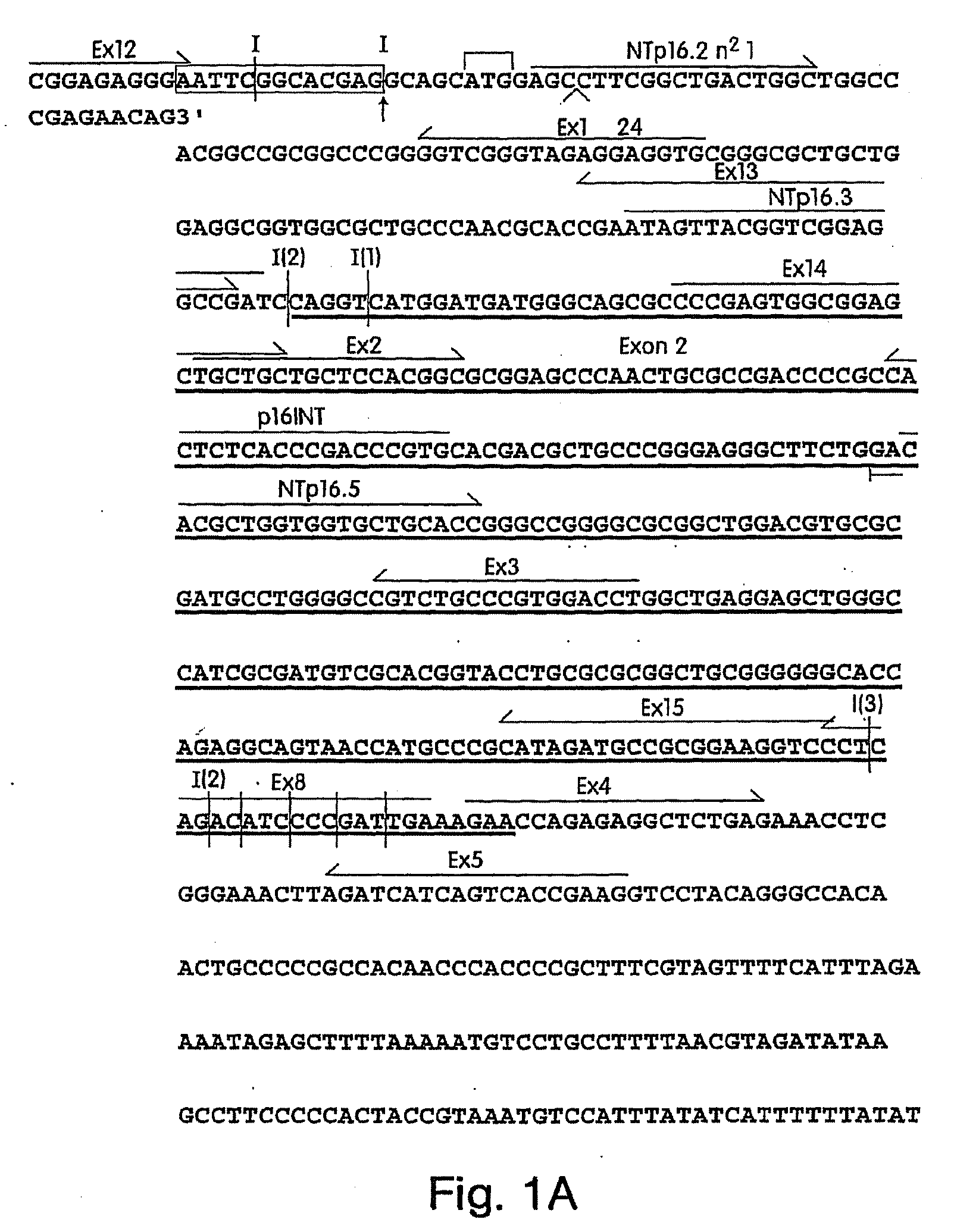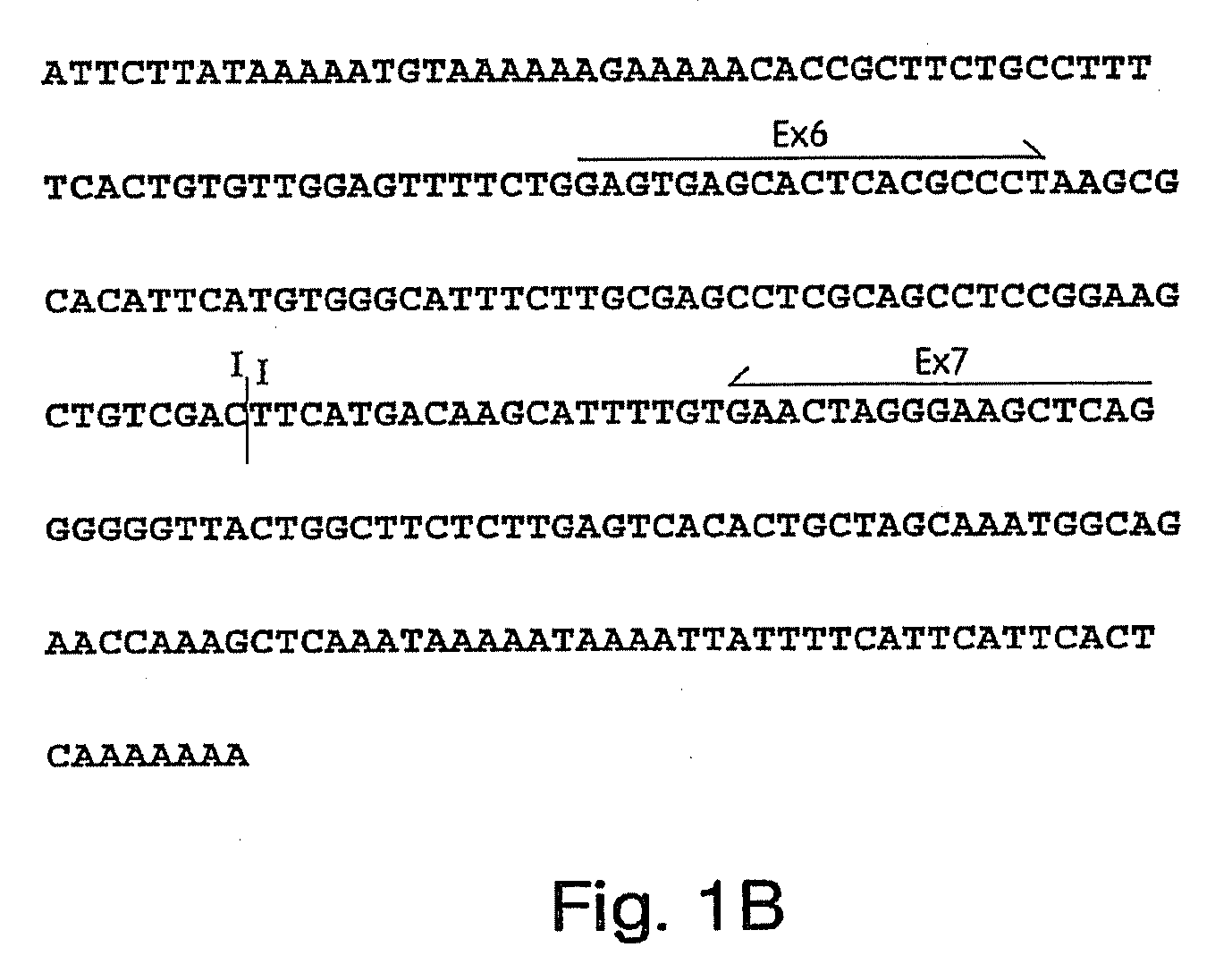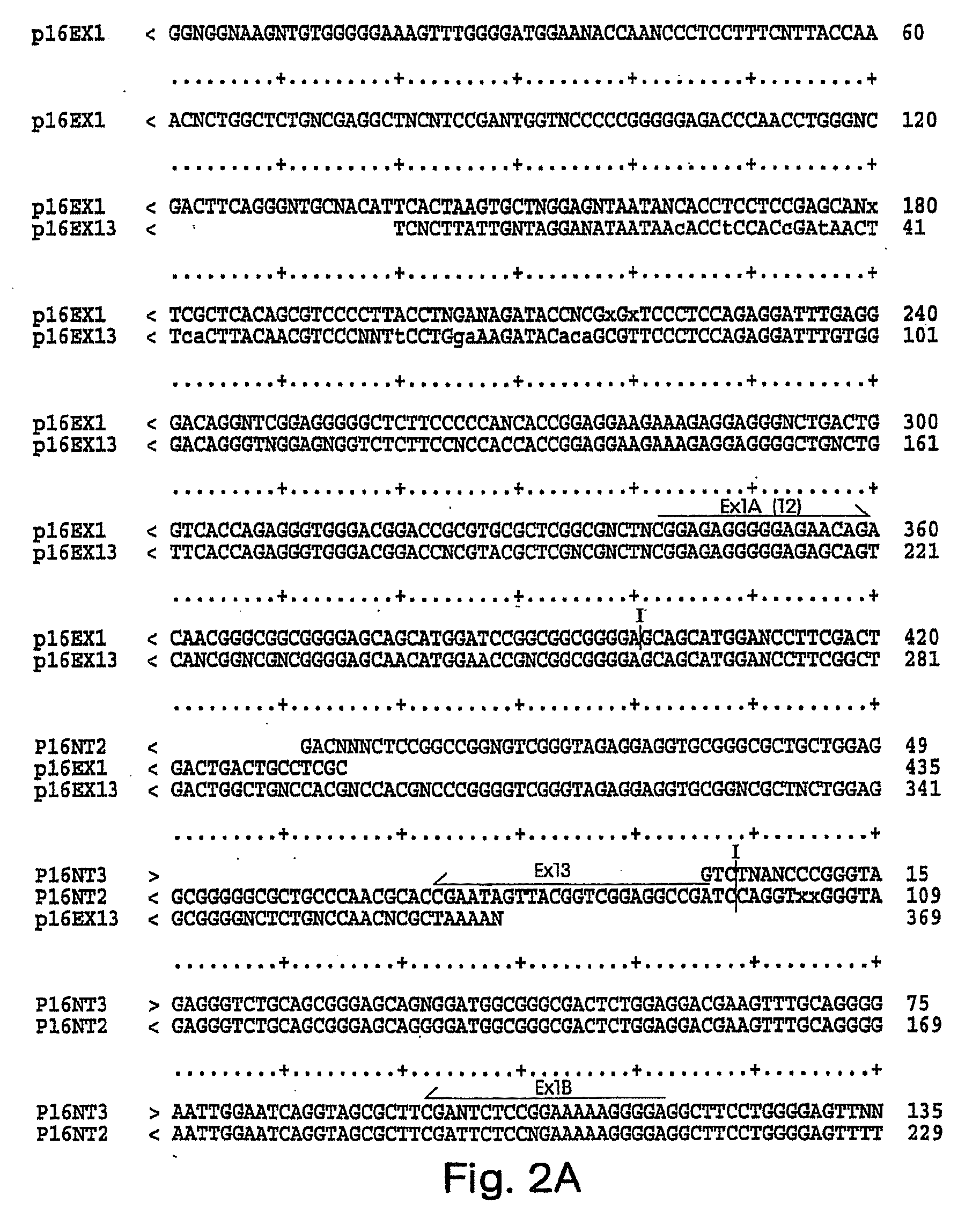Antibodies to cell-cycle regulatory protein p16, and uses related thereto
a cell-cycle regulatory and anti-regulatory technology, applied in the field of anti-regulatory protein of cell-cycle regulatory protein p16, can solve the problem of little information regarding the manner in which cdk phosphorylation of rb was negatively regulated, and achieve the effect of inhibiting its binding
- Summary
- Abstract
- Description
- Claims
- Application Information
AI Technical Summary
Benefits of technology
Problems solved by technology
Method used
Image
Examples
example 1
Demonstration of Selective Subunit Rearrangement of Cell-Cycle Complexes in Association with Cellular Transformation by a DNA Tumor Virus or its Oncogenic Product
[0199](i) Cellular Transformation with DNA Tumor Virus SV40 is Associated with Subunits Rearrangement of Cell-Cycle Complexes
[0200]Preparation of [35S] methionine-labelled cell lysates and polyacrylamide gel electrophoresis were as described above, as well as described in PCT Publication No. WO92 / 20796. Cell lysates were prepared from either human normal diploid fibroblast cells WI38 or DNA tumor virus SV40 transformed WI38 cells, VA 13. Cell lysates were immunoprecipitated with antibodies against each cell-cycle gene products.
[0201](ii) Subunit Rearrangements of Cell-Cycle Complexes in Two Different Pair Cell Lines
[0202]Methods for preparation of cell lysates are the same as described above. Two different pair cell lines were used in these experiments. HSF43 is a normal human diploid fibroblast cell line and CT10 (full nam...
example 2
Cloning of p16, an Inhibitor of CDK4 Activity
[0207](i) Cloning of p16 Using the Two Hybrid Assay
[0208]Saccharomyces cerevisiae YPB2 cells were transformed simultaneously with a plasmid containing a GAL4 db-p16 fusion and with a plasmid containing, respectively, the GAL4ad fused to cdc2 (CDK1), CDK2, CDK4, CDK5, PCNA (proliferating cell nuclear antigen), and the fission yeast kinase Snf 1. After growing cells in medium selective for both plasmids (minus tryptophan and minus leucine), two colonies were picked randomly and were streaked in plates that either contained or lacked histidine. The ability to grow in the absence of histidine depends on the expression of the HIS3 gene that is under a GAL4-responsive promoter and, therefore, indicates that a functional GAL4 activator has been reconstituted through the interaction of p16 with the corresponding target protein.
[0209](ii) Interaction of p16 CDKs
[0210]Purified bacterially-produced GSTp16 fusion protein was mixed with 35S-labeled in...
example 3
Chromosomal Mapping of p16
[0215]Genomic clones of the human p16 gene were isolated by stringency screening (68° C. with 0.1×SSC wash) of a λFIXII human genomic library (Strategene) with cDNA probes. Isolated phage clones were confirmed by high stringency Southern hybridization and / or partial sequence analysis. Purified whole phage DNA was labelled for fluorescent in situ hybridization (FISH) analysis.
[0216]FISH analysis was performed using established methods (Demetrick et al. (1994) Cytogenet Cell Genet 66:72-74; Demetrick et al. (1993) Genomics 18:144-147; and DeMarini et al. (1991) Environ Mol Mutagen 18:222-223) on methotrexate or thymidine synchronized, phytohaemagglutinin stimulated, normal peripheral blood lymphocytes. Suppression with a mixture of sonicated human DNA and cotl DNA was required to reduce the background. The stained slides were counterstained with propidium iodide (for an R banding pattern) or DAPI and actinomycin D (for a DA-DAPI banding pattern), mounted in a...
PUM
| Property | Measurement | Unit |
|---|---|---|
| Atomic weight | aaaaa | aaaaa |
| Atomic weight | aaaaa | aaaaa |
| Molecular weight | aaaaa | aaaaa |
Abstract
Description
Claims
Application Information
 Login to View More
Login to View More - R&D
- Intellectual Property
- Life Sciences
- Materials
- Tech Scout
- Unparalleled Data Quality
- Higher Quality Content
- 60% Fewer Hallucinations
Browse by: Latest US Patents, China's latest patents, Technical Efficacy Thesaurus, Application Domain, Technology Topic, Popular Technical Reports.
© 2025 PatSnap. All rights reserved.Legal|Privacy policy|Modern Slavery Act Transparency Statement|Sitemap|About US| Contact US: help@patsnap.com



